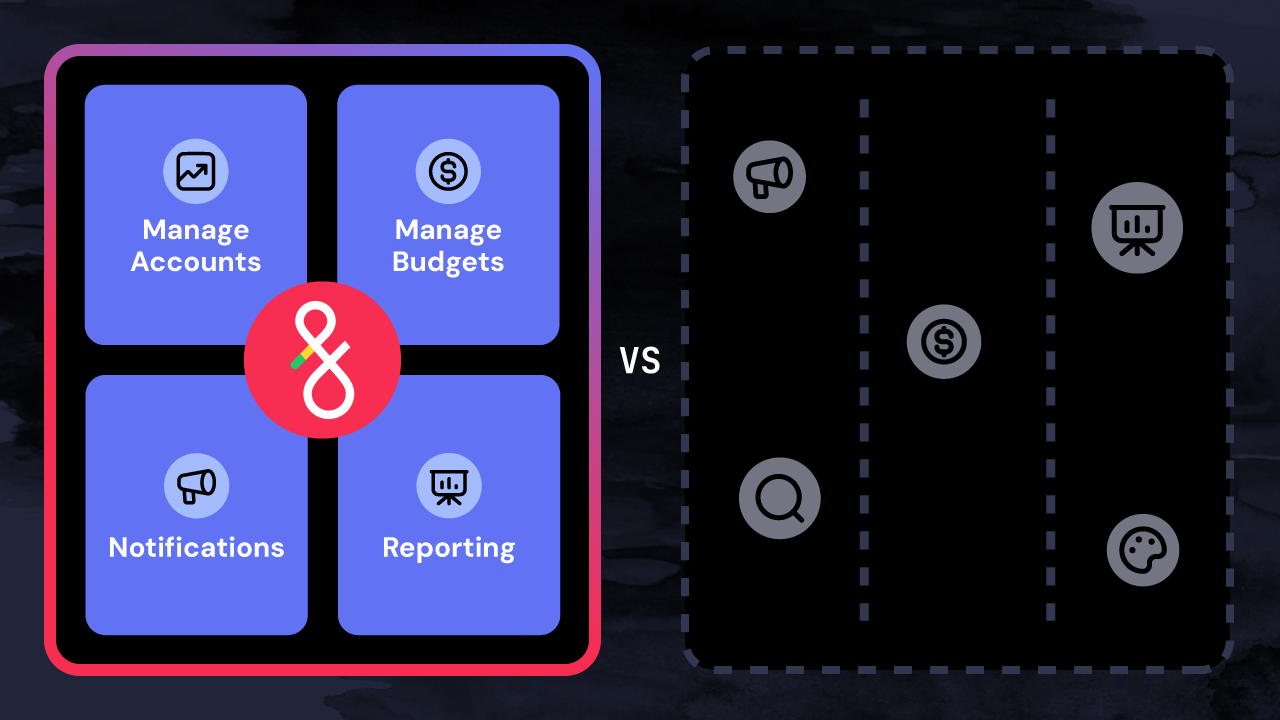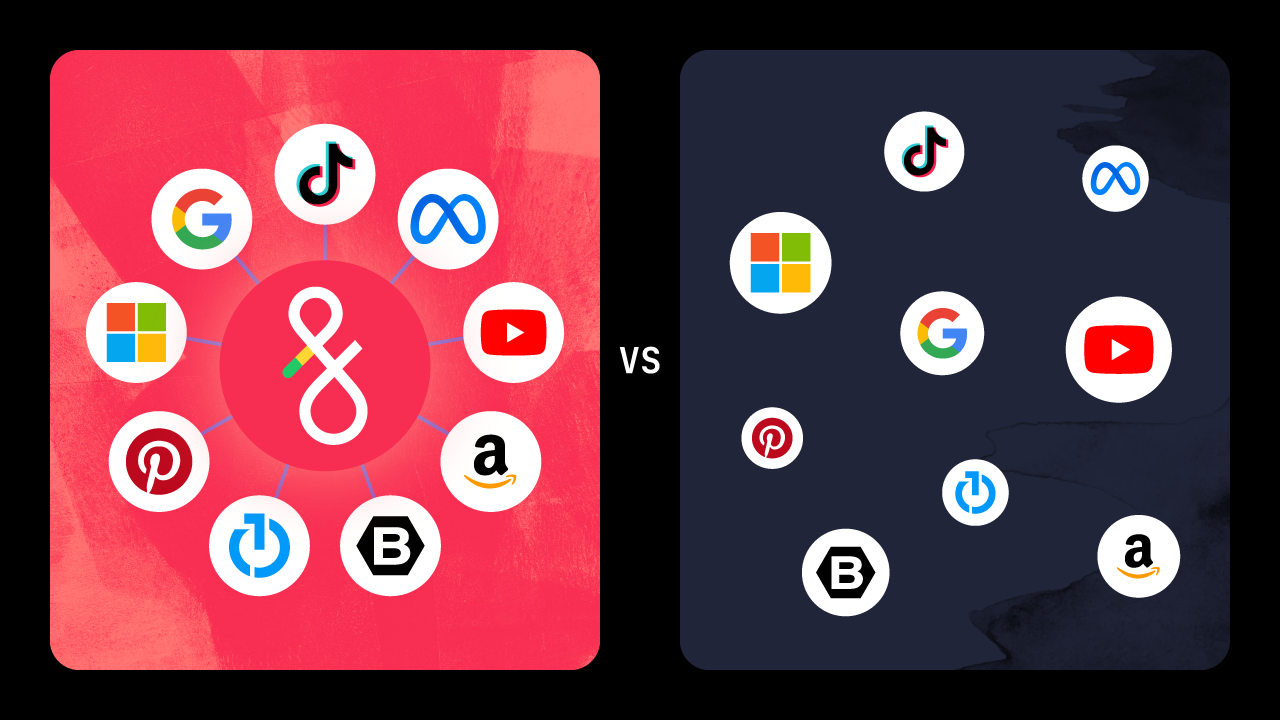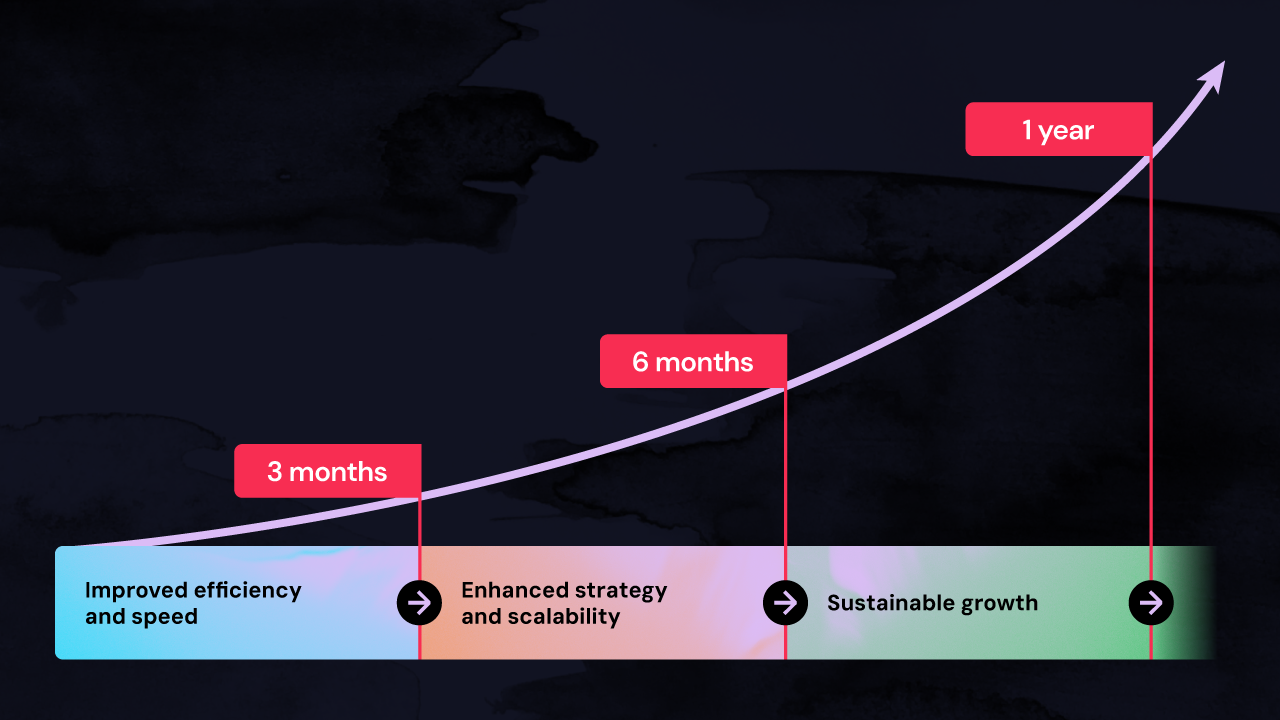Whether you’re managing a handful of locations or thousands, the challenges you face every day strain your time, energy, and patience. Strategically balancing hyper-local messaging with consistent, brand-wide performance is hard enough without considering how to logistically pull it off.
As prospect expectations for tailored messaging grow, multi-location advertisers must find ways to execute effective, localized campaigns without ballooning costs. How are they to pull this off?
As someone who manages advertising for more than 70 event locations, Cassie Allinger is all too familiar with the struggles of multi-location advertising. This article how Allinger, the Senior Director of Growth Marketing at Wedgewood Weddings and Events, utilized automation to reduce operational costs by 50% while improving lead generation. Allinger shared these insights on a recent podcast episode with Rachel Bulla, SVP of Growth at Fluency, and Andy MacLeay, VP of Engagement and Channels at Fluency.
Here are four ways that Allinger and her team use automation to drive operational efficiencies and organization-wide results.
Improve multi-location personalization and org-wide performance
Customization at scale is one of the biggest challenges multi-location advertisers face. As buyers become more discerning about online ads, hyper-local campaigns are crucial for reaching the right audiences with the right messaging at the right times. You must find a way to cater to individual locations while maintaining overall organizational performance.
In addition to pulling off localized messaging at scale, advertisers need to remain cost-effective. Keeping margins low is difficult because you often need to add team members if you want to expand locations, channels, or reach.
Automation balances the varied interests of individual locations with efficient campaign management and execution at the organizational level. In turn, you can ensure both brand consistency and localization at scale.
Here’s how Cassie Allinger, Senior Director of Growth Marketing at Wedgewood Weddings and Events, described setting up localized multi-location campaigns for scalable growth:
"We set up a campaign strategy…that supported each individual location, their style, their offerings, their unique geographic reach across multiple platforms, and media types,” she said. “What was so beautiful about what we built…is then we layered on automation logic that connected back to our internal performance numbers and how we manage the business."
Automation made it easier for Wedgewood Weddings and Events to track performance across their entire organization: more than 70 locations! With all this data living in one centralized platform, Allinger said they used performance-driven automation to “move our bidding and budgeting according to how we are performing against goals in any given month or quarter.” These changes drove tangible results, including a 49% reduction in cost-per-acquisition year-over-year.
Allinger and her team improved their location-based advertising efforts while simultaneously improving operational workflows across their entire multi-location strategy. Allinger credits automation with enabling their company “to grow really fast and move on to bigger and better things.”
“Having a system that streamlines all of that is really essential to your sanity and also to execute campaigns that perform,” she added.
Eliminate human-prone errors and manual processes
Your teams can do incredible things, but everyone is susceptible to making mistakes now and then.
Managing different accounts, campaigns, channels, and locations is a logistical nightmare, particularly if these components rely on manual-heavy workflows. The more convoluted a workflow or process is, the greater the chance that a mistake will be made.
“There is so much opportunity for mistakes when you are working at large scale,” Allinger said. “You enter into this needle-in-a-haystack situation where, not only could the mistake be really large, but the mistake could be small in an ecosystem of millions of data points. It's really hard to find those mistakes."
Offloading tasks to automation can significantly reduce the risk of errors. Technology has virtually unlimited capacity when it comes to completing repeatable tasks in an instant. Automation can save you hours of time every day so you can get back to focusing on more strategic, high-value work.
Automation can also make it easier to identify and resolve issues that occur. Allinger said that bringing in automation has given her team better “control” of their advertising operations.
“If something breaks, we move really swiftly. [We also] can find the error, so that the error is resolved really quickly and does not become a mountain."
With automation, Alligner’s team has gained more efficient and accurate ad campaign management across every channel for their 70+ locations.
Enable channel expansion and testing by automating baseline channels
Let’s face it: for some channels, you are practically running on autopilot already. You have a successful playbook. You know what works. Most of your time is spent on “rinse, repeat” tasks that keep things running, but you’re not making much progress on strategic growth.
Imagine taking all the time spent on simply managing your core channels and putting it toward expanding into new channels, like programmatic. If you have a channel playbook, code of best practices, or a way to address common problems, it can be automated. Automating these core channel functionalities at scale gives you back time to try new things.
"If you're able to automate those channels and figure out how to optimize performance, make things simpler, then you have the capacity to test new things, especially with a partner like Fluency,” said Rachel Bulla, AVP of Growth at Fluency. “We have channels that maybe some agencies haven't tested or haven't been able to cover on their baseline, especially with some multi-location businesses having thousands of locations across the country or the world."
Automating your foundational channels can free up resources—time, money, and staff—for experimentation. With automation handling the heavy lifting of baseline channel management, you can develop more innovative and varied media strategies, which may attract new customers.
For example, Allinger has found that automation has also opened up testing opportunities as her team gains more time for strategic work.
“What's been really powerful for me and for us is that we're able to spend more time focusing on strategic work, testing out different audiences and executions and strategies and frameworks within the whole ecosystem—without it taking a team of 10 and hundreds and hundreds of hours,” she said. “In the past, if I were to have tried to do this without such a platform, just the QA work alone would have been three to four weeks to do the types of executions that we…roll out now in a matter of hours."
Improve operational agility as you reduce complexity
Managing this array of multi-location campaigns comes with inherent complexity. With so many factors to consider, it’s hard to get them all optimized. Plus, it’s a huge undertaking to make changes for every location and channel when unexpected situations arise.
“You have all these different campaigns that you want to run. You've got all this different creative you want to have around different events that are going on,” said Bulla. “Whether you have to figure that out with three locations or 3,000 locations…How do you manage all of that within the digital ad platforms? That’s a really complex job.”
Automation reduces operational bottlenecks by taking these repeatable, time-consuming tasks off your plate. Some automation tools, like those at Fluency, even enable you to make bulk edits for accounts, hudgets, campaigns, ad groups, creative, and more. Rather than make changes across every single campaign, for example, you can make them in one place and push the changes live to every publisher.
Simplifying these processes gives you immense agility and flexibility for making rapid changes. In turn, you can adapt quickly to changing circumstances, even when managing hundreds of accounts or locations.
“if you want to change something last minute, it's next to impossible,” said Bulla. “You have to have approvals from the national level, from the regional level, the store level…and even at the agency, they have to understand what needs to be changed. That bottleneck can be solved with automation.”
For example, Allinger and her team used Fluency to completely restructure their entire ad strategy in just 48 hours when Covid hit back in 2020.
“I had to completely undo everything we built in a matter of days,” she added. “We simplified to a consolidated model very fast…and changed our entire marketing strategy so that we could survive for a while. And Fluency made that really, really easy.”
Conclusion
Automation is a crucial tool for multi-location advertisers who already have too much on their plates. Utilizing technology helps you reduce human errors, expand your media mix, and reduce operational complexity—all while improving performance and internal processes.
You can listen to the full conversation between Allinger, Bulla, and MacLeay on the AW 360 podcast episode, “Multilocation at Scale: How to deploy custom, local campaigns for maximum efficiency and performance.”

.avif)




